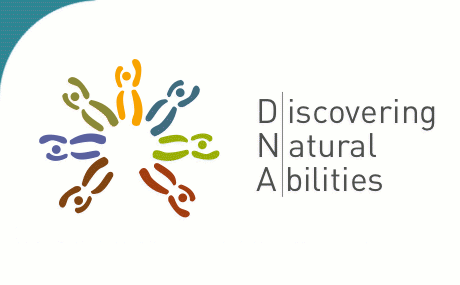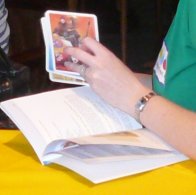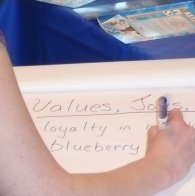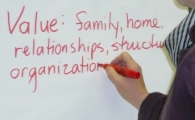
True Colors lively and interactive programs have become the easiest and most convenient way of discovering one‘s strengths, and understanding human behavior.
Since 1978, when Don Lowry founded True Colors, its mission has been to enhance the way we live, work, communicate and interact with those around us at work and in our personal lives.
Over the last 26 years, thousands of individuals have experienced the True Colors process, which is widely used in the United States, Canada, Latin America the United Kingdom and parts of Asia and is available in multiple languages.
A distinguishing quality of the True Colors Programs is the artful blending of education and entertainment, into ‚ "edu-training" programs that combine audience interaction with insightful materials that inform and delight participants because they are easy to understand, to apply on a daily basis and to retain over a lifetime.
True Colors is used in schools, businesses, corporations, government and nonprofit organizations, and in people‘s personal, family and social interactions.
The Genesis of True Colors
In 1978, founder Don Lowry, the driving force behind True Colors, became interested in the work of clinical psychologist David Keirsey. Keirsey, author of the best-selling self-help book Please Understand Me, studied the work of psychologists Carl Jung, Katherine Briggs and Isabel Myers who theorized that all people fit into one of four broad categories of personality.
The concepts instantly rang true with Lowry, who quickly recognized their potential to improve people‘s lives, careers and relationships. So he set about developing a fundamental and universal way to package the information into practical guidelines that could be understood and easily applied by both children and adults alike.
The result is True Colors, which expands upon Keirsey‘s four temperament types, and translates complicated personality and learning theory into ‚ "one of the easiest, most convenient ways of understanding and appreciating human behavior."
The True Colors program asks participants to identify their ‚ "color spectrum" using four cards that represent key personality types: Blue, Gold, Green or Orange. Each color has particular strengths and each analyzes, conceptualizes, understands, interacts and learns differently. But these differences, if not acknowledged and understood, can become barriers to interpersonal communication, making understanding between people of different types difficult.
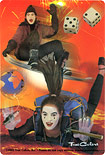
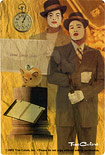
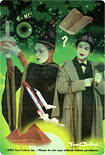
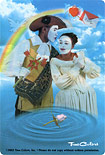
Lowry believed that entertainment offers the most broadly appealing and universal context for communicating messages; so he specifically designed the program to be as entertaining and fun as possible. When people are entertained and relaxed, Lowry realized, their resistance to new ideas diminishes, allowing them to fully experience and become aware of their own True Colors, and those of the people around them.
The company‘s first guidebook, The Keys To Personal Success, was published in 1979. Sales took off, seminars and shows ensued. Before long, devotees were clamoring to become certified True Colors trainers.
The theory behind True Colors
It can be traced back to Hippocrates, who identified four different types of human beings; the Sanguine (buoyant, cheerful, hopeful, optimistic, sunny), the Choleric (angry, cantankerous, peevish, irate, testy), the Phlegmatic (languid, lethargic, listless, indifferent, passive), and the Melancholic (dejected, despondent, gloomy, morose). While these definitions are derived from Webster‘s Thesaurus rather than from Hippocrates, you can see that each refers to very different personality or temperament characteristics.In more recent years, Carl Jung described personality or temperament differences as a fundamental basis for understanding human beings. When his work, Psychological Type, was translated into English in 1923, it had a profound effect on Katherine C. Briggs, who had been studying differences in people for years. As a result, Briggs and her daughter, Isabel Briggs-Myers, developed the Myers-Briggs Type Indicator (MBTI), which is used worldwide. Their theory states that much of the random variation in human behavior is actually quite orderly. In their work, they identified and characterized sixteen (16) different types of people.
During the past thirty-five years, David Keirsey has refined the work of Myers-Briggs. In his publication, Please Understand Me, he returned to classifying personality and/or temperament into four types. According to Keirsey, these four different types are different in fundamental ways. They want different things. They have different motives, needs, and drives. They analyze, conceptualize, understand, and learn differently. These differences create natural barriers to interpersonal communication, making understanding between people of different types difficult.
The True Colors metaphor has been developed from the work of Keirsey. Don Lowry‘s book, Keys to Personal Success, translates his theory into simple and practically applied information. It brings complex ideas out of both academia and psychotherapy and sets them in clear, real-life applications.
A considerable body of information supports the theory that there are four patterns of habitual human behavior or temperament: (Adickes, 1907; Spranger, 1920; Kreschmar, 1920, 1960; Fromm, 1947; Keirsey, 1967, 1978).
A growing body of knowledge also supports the theory that these four patterns of behavior are the key to individual self-esteem and its growth: (Jung, 1920; Hillman, 1979; Keirsey, 1973; Lawrence, 1979, 1980; Provost, 1987)
